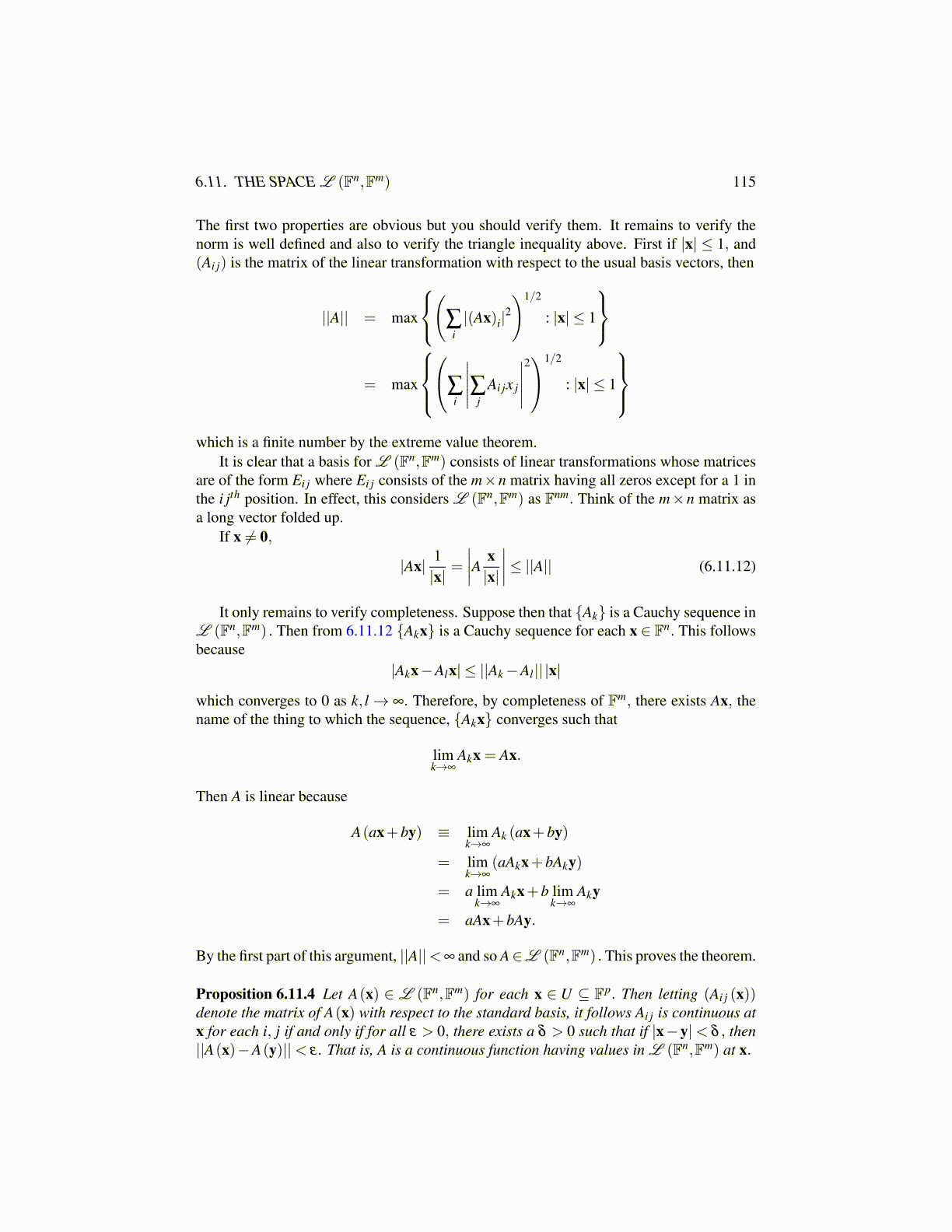
6.11. THE SPACE L (Fn,Fm) 115
The first two properties are obvious but you should verify them. It remains to verify thenorm is well defined and also to verify the triangle inequality above. First if |x| ≤ 1, and(Ai j) is the matrix of the linear transformation with respect to the usual basis vectors, then
||A|| = max
(
∑i|(Ax)i|
2
)1/2
: |x| ≤ 1
= max
∑
i
∣∣∣∣∣∑jAi jx j
∣∣∣∣∣21/2
: |x| ≤ 1
which is a finite number by the extreme value theorem.
It is clear that a basis for L (Fn,Fm) consists of linear transformations whose matricesare of the form Ei j where Ei j consists of the m×n matrix having all zeros except for a 1 inthe i jth position. In effect, this considers L (Fn,Fm) as Fnm. Think of the m×n matrix asa long vector folded up.
If x ̸= 0,
|Ax| 1|x|
=
∣∣∣∣A x|x|
∣∣∣∣≤ ||A|| (6.11.12)
It only remains to verify completeness. Suppose then that {Ak} is a Cauchy sequence inL (Fn,Fm) . Then from 6.11.12 {Akx} is a Cauchy sequence for each x ∈ Fn. This followsbecause
|Akx−Alx| ≤ ||Ak−Al || |x|
which converges to 0 as k, l→ ∞. Therefore, by completeness of Fm, there exists Ax, thename of the thing to which the sequence, {Akx} converges such that
limk→∞
Akx = Ax.
Then A is linear because
A(ax+by) ≡ limk→∞
Ak (ax+by)
= limk→∞
(aAkx+bAky)
= a limk→∞
Akx+b limk→∞
Aky
= aAx+bAy.
By the first part of this argument, ||A||<∞ and so A∈L (Fn,Fm) . This proves the theorem.
Proposition 6.11.4 Let A(x) ∈ L (Fn,Fm) for each x ∈ U ⊆ Fp. Then letting (Ai j (x))denote the matrix of A(x) with respect to the standard basis, it follows Ai j is continuous atx for each i, j if and only if for all ε > 0, there exists a δ > 0 such that if |x−y|< δ , then||A(x)−A(y)||< ε . That is, A is a continuous function having values in L (Fn,Fm) at x.